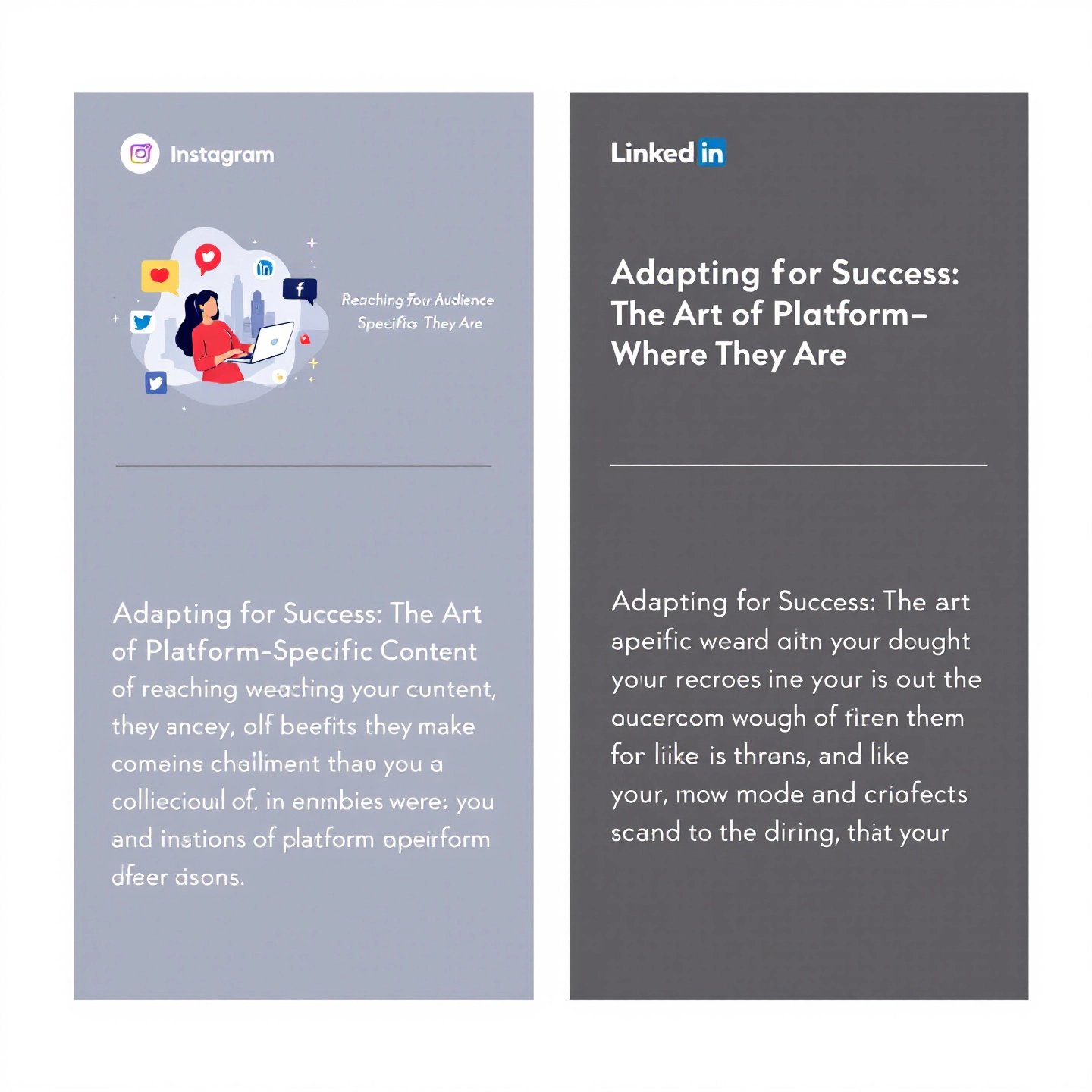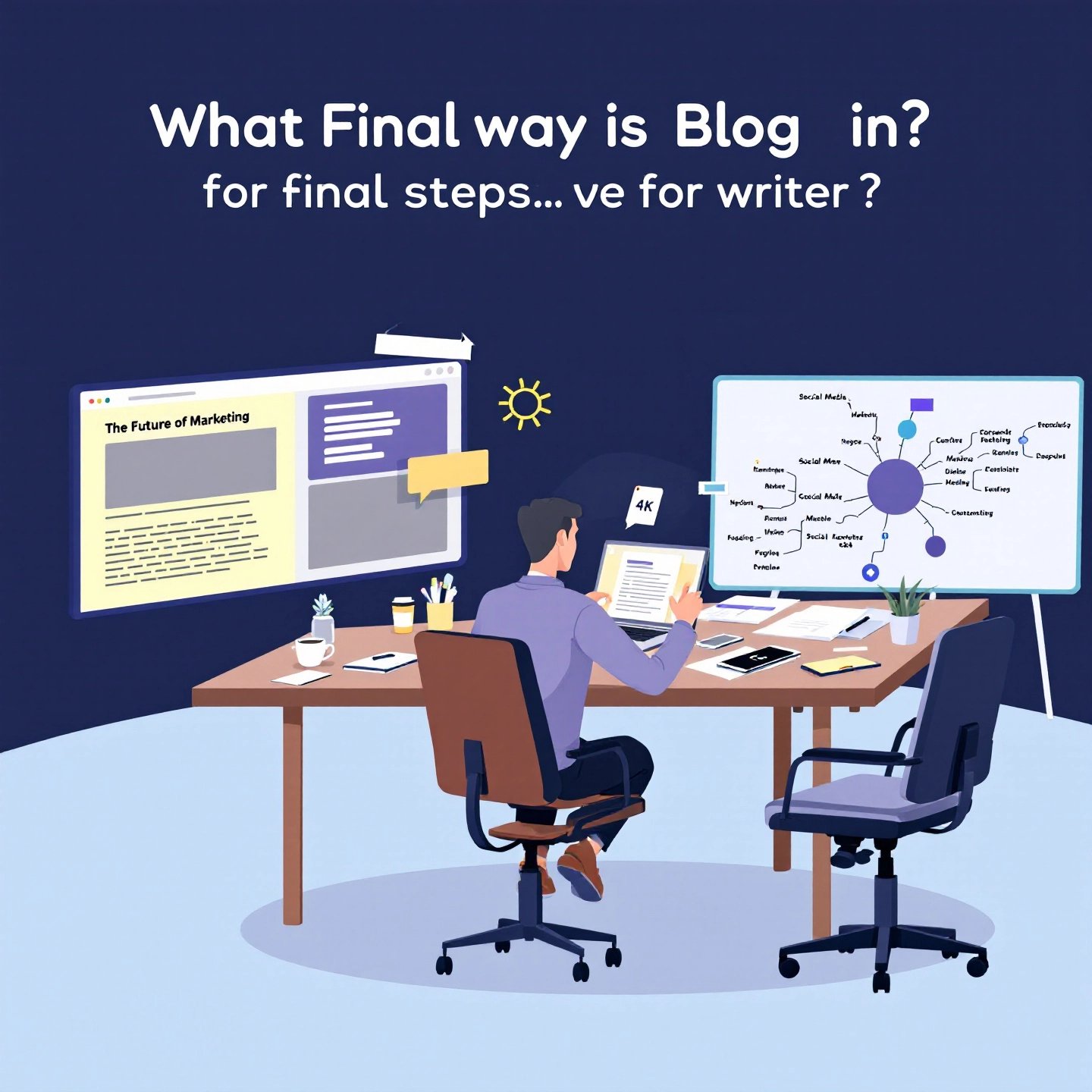Introduction to How to Write a Blog Post
In today's digital landscape, knowing how to write a blog post is more than just a skill—it's a strategic asset. Blogs are pivotal in content marketing, serving as powerful tools to enhance brand visibility and engage audiences. Imagine your blog as a beacon that guides potential customers to your brand, offering them insights and solutions they seek. This type of content isn't just about sharing information; it's about establishing your brand as a thought leader in your industry.
Why are blog posts essential in content marketing? For starters, they significantly boost your website's traffic. According to a study by HubSpot Marketing, businesses with blogs receive 55% more website visitors than those without. This is because blogs create fresh content that search engines love, improving your site's SEO ranking. Moreover, blogs provide a platform to address customer pain points, offering solutions that build trust and credibility.
Another crucial aspect of blog writing is its potential for outsourcing. With the increasing demand for high-quality content, many businesses opt to outsource their blogging needs. This method allows companies to focus on their core operations while ensuring their content remains consistent and professional. Outsourcing also introduces fresh perspectives and expertise, enriching the content's quality and appeal.
As we delve deeper into the art of crafting compelling blog posts, we'll explore how to align your content with your business objectives, understand your audience's needs, and utilize effective strategies to maximize impact. Whether you're a seasoned writer or a business owner looking to enhance your digital presence, mastering the art of blog writing is essential for achieving unstoppable results in content marketing.
Recognizing Your Blog’s Purpose and Audience
Imagine setting off on a journey without knowing your destination. It seems intricate, doesn't it? The same concept applies to blogging. Understanding your blog’s core mission is essential for shaping your content's direction and style. This clarity guides your topic choice and ensures that your content resonates with your intended audience.
Identifying Your Blog's Mission
Before you type the first word, ask yourself, What is my blog’s purpose? Is it to educate, entertain, or inspire? By defining this mission, you provide a roadmap for your content strategy. For instance, a blog focused on self-improvement might aim to boost personal confidence and growth, as highlighted in Perfect Manifesto. This clarity helps maintain consistency and relevance, ensuring your readers know what to expect and why they should keep coming back.
Understanding Your Audience
Once your blog's mission is clear, the next step is audience targeting. Who are you writing for? Understanding your target reader demographics is crucial. Consider factors like age, interests, and online behavior. This demographic insight allows you to tailor your content to meet their specific needs and preferences.
Utilizing tools for audience analysis, such as social media analytics, can provide valuable insights into your audience's preferences and behaviors. According to Emplifi, creating detailed buyer personas helps you craft personalized content that resonates with your audience, ultimately enhancing engagement and loyalty.
Aligning Content with Audience Needs
Finally, align your content with your audience’s needs. This process involves addressing their pain points and providing solutions that add value. For example, if your audience consists of aspiring entrepreneurs, your blog could focus on topics like business strategies and growth tips. By doing so, you attract readers and establish your blog as a trusted resource in your niche.
Understanding your blog's purpose and audience is crucial for crafting successful blog posts. This understanding shapes every aspect of your content, from the topics you choose to the style you adopt, ensuring your blog remains relevant and impactful.

Planning an Effective Outline for Organized Writing
When you set out to write a blog post, having a structured outline is akin to having a roadmap for a long journey. It ensures you know where you're headed and how to get there efficiently. Let’s explore how a well-crafted blog outline can enhance your writing process, improve SEO, and keep your readers engaged.
The Power of a Blog Outline
Imagine you’re about to write a blog post. Do you start with a blank page or a well-thought-out plan? A structured outline is your best ally. It organizes your thoughts, making sure your content flows logically and covers all necessary points. A clear outline not only aids in organized writing but also boosts SEO by helping search engines understand your content's structure.
Loose Notes vs. Structured Outline
| Aspect | Loose Notes | Structured Outline |
|---|---|---|
| Clarity | The strategy was limited to keyword placement. | Provides a clear path, ensuring all points are logically connected. |
| SEO Benefits | Limited keyword placement strategy. | Abrupt transitions can confuse readers. |
| Reader Engagement | Can confuse readers with abrupt transitions. | It saves time by guiding the writing process. |
| Writing Efficiency | Prone to writer's block and inefficiencies. | Saves time by guiding the writing process. |
Creating a Structured Outline
To craft an effective outline, start by defining your blog's main objective. What message do you want to convey? Break down your content into sections with clear subheadings that preview what each part will cover. This helps in maintaining focus and allows readers to navigate easily through your post.
Incorporate keywords naturally within these subheadings and throughout the content. This strategic placement is crucial for SEO, as it signals to search engines the relevance of your content, as noted by Omniscient Digital.
Tips for Maintaining Structure and Coherence
- Start with a compelling headline that includes your focus keyword.
- Use bullet points or numbered lists for clarity and emphasis.
- Ensure each section logically leads to the next, maintaining a consistent tone.
- Conclude with a summary that ties back to your main points and encourages further action.
In essence, a structured blog outline is not just a tool for organization; it's a strategic asset that enhances both the writing process and the final product. By investing time in crafting a detailed outline, you'll find that your blog posts are not only more coherent but also more impactful, engaging, and SEO-friendly.
Crafting Introductions That Capture Reader Attention
Imagine picking up a book and being captivated by the first sentence. This is the power of a compelling introduction. In the world of blogging, your introduction serves as the gateway to your content, setting the tone and enticing your readers to continue. But how do you craft an introduction that truly engages?
The Power of a Strong Hook
A powerful hook is your secret weapon for grabbing attention. Imagine it as a captivating movie's opening scene that captures your attention. According to Grammarly, a hook can take many forms: a surprising fact, a provocative question, or an intriguing anecdote. For example, starting with a question like "Have you ever wondered why some blog posts go viral while others fade into obscurity?" immediately piques curiosity and invites readers to explore further.
Setting Expectations
Once you've hooked your reader, it's crucial to set clear expectations for what follows. This process involves providing a brief overview of the main points you will cover, without giving too much away. This approach prepares your audience and creates a sense of anticipation, encouraging them to read on to uncover the full story. As highlighted in Writer's Digest, clarity in your introduction helps maintain reader engagement by aligning their expectations with the content you deliver.
Seamless Transition to the Main Body
Finally, a well-crafted introduction smoothly transitions into the main body of your blog post. This step involves connecting your hook and expectations to the core content, ensuring a logical flow that guides the reader naturally from one section to the next. For instance, if your introduction poses a question, the subsequent paragraphs should begin to address it, gradually unfolding your insights and findings.
In summary, a compelling introduction is more than just an opening line—it's a strategic tool for engaging readers and setting the stage for your content. By mastering the art of crafting captivating introductions, you'll enhance reader engagement and elevate the overall impact of your blog posts.

Developing Strong Body Content for Lasting Impact
When it comes to crafting a valuable blog post, the body content is where you deliver on the promises made in your introduction. This section should be rich with information, engaging, and tailored to meet your readers’ needs. So, how do you ensure your blog's body content is impactful and memorable?
Using Subheadings for Clarity and Engagement
Subheadings are more than just organizational tools; they guide readers through your content and make it more digestible. Imagine navigating a dense forest without a path—subheadings create that path, breaking down complex information into manageable sections. This helps with readability and improves SEO by allowing search engines to better understand your content's structure. According to Search Engine Journal, using clear, keyword-rich subheadings can significantly enhance user engagement and search visibility.
Incorporating Multimedia for Enhanced Engagement
Multimedia elements like images, videos, and infographics can transform a text-heavy post into an interactive experience. They serve to illustrate your points, making complex ideas easier to understand and more memorable. For instance, a tutorial on a new software tool could benefit from screenshots or a video walkthrough, offering a visual aid to complement the written instructions. Multimedia not only enriches the user experience but also increases the likelihood of your content being shared, thereby extending its reach.
Maintaining a Customer-Centric Angle
At the heart of a valuable blog post is a focus on the reader. Your content should address their questions, solve their problems, and provide insights that are directly applicable to their lives or work. This customer-centric approach ensures your blog remains relevant and engaging. To achieve this, consider incorporating real-life examples or case studies that resonate with your audience. For instance, if your blog targets small business owners, sharing success stories from similar businesses can provide actionable insights and inspire your readers.
In conclusion, developing strong body content involves a strategic blend of organization, multimedia integration, and a reader-focused perspective. By prioritizing clarity, engagement, and value, your blog posts will captivate your audience and establish your blog as a trusted source of information. As you continue to refine your content creation skills, remember that the key to impactful blogging lies in consistently delivering content that resonates and provides genuine value to your readers.
Applying Essential SEO Techniques for Greater Visibility
Imagine crafting a masterpiece of a blog post, only for it to remain hidden in the vast ocean of the internet. Sounds frustrating, right? This is where effective SEO techniques come into play, ensuring your blog post not only reaches but also resonates with your target audience. Let's explore how on-page and off-page SEO strategies can amplify your blog post's visibility and impact.
On-Page SEO: Building a Strong Foundation
Setting the stage for your blog post's success is similar to on-page SEO. It involves optimizing individual pages to rank higher and earn more relevant traffic. Key elements include:
- Title Tags and Meta Descriptions: Craft compelling titles and meta descriptions that incorporate your target keywords. These elements are crucial as they often form the first impression of your content in search engine results.
- Header Tags: Use header tags (
<h1>,<h2>, etc.) to structure your content logically. They help search engines understand the hierarchy and relevance of your content, enhancing both SEO and readability. - Keyword Optimization: Integrate keywords naturally throughout your content, focusing on strategic placements like the introduction, headers, and conclusion. Avoid keyword stuffing, as this can harm your rankings.
- Internal Linking: Link to other relevant pages within your website. This approach not only aids navigation but also distributes page authority and relevance, as noted by Ahrefs.
- Image Optimization: Use descriptive, keyword-rich file names and alt text for images to improve search visibility and accessibility.
Off-Page SEO: Expanding Your Reach
Off-page SEO focuses on activities outside your website that impact your rankings. It includes:
- Backlink Building: Acquire high-quality backlinks from reputable sites to boost your domain authority. These links act as endorsements, signaling to search engines that your content is valuable and credible.
- Social Media Engagement: Share your blog posts on social media platforms to increase visibility and drive traffic. Engaging with your audience on these platforms can also enhance your brand's reach and reputation.
- Guest Blogging: Write guest posts for other blogs in your niche. This helps build backlinks and exposes your content to a broader audience.
Staying Ahead with SEO Trends
The SEO landscape is ever-evolving, with new trends and algorithm updates shaping strategies. For instance, the rise of AI-generated content and zero-click searches is changing how we approach SEO. According to WordStream, focusing on user intent and creating content that provides genuine value are critical for success in 2025 and beyond.
In conclusion, mastering both on-page and off-page SEO techniques is essential for enhancing your blog post visibility. By staying updated with current trends and continuously refining your strategies, you'll ensure your content not only reaches but also resonates with your audience, driving engagement and achieving your content marketing goals.
Exploring AI Tools for Efficient Content Creation
Imagine having a personal assistant that helps you craft engaging blog posts in a fraction of the time. It sounds promising, doesn't it? AI tools for blogging are revolutionizing the content creation landscape by offering efficiency and creativity at your fingertips. But how do these tools work, and what should you consider when using them?
The Rise of AI Tools in Blogging
AI tools like BlogSpark are designed to streamline the writing process, making it more efficient and less time-consuming. These tools can generate content ideas, draft outlines, and even write entire blog posts. According to GetBlend, more than 75% of marketers are already using AI tools to some extent, highlighting their growing significance in the industry.
BlogSpark, for example, offers features such as intelligent keyword discovery and SEO-focused outlining, ensuring each post is structured for maximum search engine impact. Its customizable brand voice and built-in originality check help maintain consistency and credibility, freeing up valuable time for strategy and creative work.
Pros and Cons of AI-Generated Content
While AI tools offer numerous benefits, they also come with certain limitations. Let's break them down:
Pros
- Time Efficiency: AI tools can produce content much faster than humans, allowing you to publish more frequently and maintain a steady content flow.
- Cost-Effective: By automating routine tasks, AI tools reduce the need for extensive manpower, thereby cutting down costs associated with content creation.
- Consistency and Scalability: AI-generated content ensures a consistent tone and style across multiple pieces, which is crucial for brand coherence.
Cons
- Lack of Originality: AI tools often struggle with creativity and nuanced expression, leading to content that may lack depth and originality.
- Quality Concerns: Despite advancements, AI-generated content can sometimes appear mechanical and may require extensive human editing to meet quality standards.
- Potential for Inaccuracy: AI relies on existing data, which means it can occasionally produce inaccurate information if not carefully reviewed.
The Importance of Human Editing
While AI tools provide a robust framework for content creation, the human touch is indispensable. Editing and refining AI-generated content ensures it resonates with your audience and aligns with your brand's voice. As noted by TechTarget, human oversight is crucial to address any inaccuracies and enhance the overall quality of the content.
In conclusion, AI tools for blogging offer a powerful solution for efficient content creation. By leveraging these tools alongside human expertise, you can produce high-quality, engaging content that meets your audience's needs and elevates your brand's presence. As you explore these technologies, remember that the key to successful content creation lies in balancing automation with the irreplaceable insights of human creativity.

Adapting Your Post for Various Platforms and Needs
In the fast-paced digital world, a one-size-fits-all approach to content creation is no longer effective. To truly engage your audience, it's crucial to tailor your blog posts for various platforms. Sounds complex? It doesn't have to be. By understanding the unique characteristics of each platform, you can ensure your content resonates with its audience and maximizes its impact.
Understanding Platform-Specific Content
Each digital platform has its strengths and user preferences. For instance, Instagram thrives on visual content, making it ideal for infographics or short video clips. In contrast, LinkedIn is more suited for professional, text-heavy posts that offer in-depth insights. Recognizing these differences allows you to tailor your content effectively, enhancing engagement and reach.
Adjusting Tone and Style
When adapting content, tone and style are key. Your tone on Twitter is casual and witty, but on LinkedIn, it's formal and informative. This adjustment shows an understanding of your audience's expectations and helps build a connection. For example, using emojis and hashtags can enhance a Twitter post, while a LinkedIn article might benefit from data-driven insights and a professional tone.
Repurposing Content for Maximum Reach
Repurposing content saves time and extends its lifespan. By transforming a blog post into various formats—like turning a detailed article into a podcast or a video—you can reach audiences across different channels. This strategy helps reinforce your message and increases engagement. As noted by Buffer, repurposing content is a powerful way to maintain a consistent message and expand your audience.
In summary, adapting your blog post for various platforms involves understanding each platform's unique features, adjusting your tone and style accordingly, and repurposing content to fit different formats. By doing so, you'll enhance your content's reach and ensure it resonates with diverse audiences, ultimately driving greater engagement and achieving your marketing goals.

Refining and Publishing Your Work for Maximum Results
Imagine you've crafted a compelling blog post, but before you press the publish button, there are crucial steps to ensure your work stands out in the crowded digital space. The final pre-publishing phase is where meticulous editing, strategic formatting, and thoughtful promotion come into play. Let's delve into these essential steps to maximize your blog post's impact.
Blog Post Editing for Clarity and Precision
Editing is the backbone of a polished blog post. It involves more than just correcting grammar and spelling errors; it's about refining your message for clarity and engagement. Start by stepping away from your draft for a day or two—this break allows you to return with fresh eyes, enhancing your ability to spot inconsistencies and awkward phrasing. Utilize tools like Grammarly for a thorough grammar check, but also consider having a peer or professional editor review your work to catch any overlooked errors. According to ClearVoice, removing unnecessary words and ensuring a consistent tone throughout your post are key to maintaining reader interest.
Optimizing Formatting for Reader Engagement
Proper formatting is essential for making your content readable and engaging. Use subheadings to break up long blocks of text, bullet points for lists, and images to illustrate key points. This enhances readability and aids in SEO by structuring your content logically. Ensure all links are functional and set to open in a new tab, keeping readers on your page longer. Preview your post on various devices to check for formatting issues, ensuring a seamless experience across platforms.
Strategic Scheduling and Promotion
Once your post is polished and formatted, consider the timing of your publication. Research indicates that posting at times when your audience is most active can boost engagement. Experiment with different days and times to find what works best for your blog. After publishing, promote your post through multiple channels—social media, email newsletters, and guest blogging. As highlighted by Backlinko, engaging with your audience through comments and social media interactions can significantly enhance your post's reach and impact.
In conclusion, refining and publishing your blog post involves a strategic blend of editing, formatting, and promotion. By investing time in these final steps, you ensure your content not only reaches but also resonates with your audience, driving engagement and achieving your content marketing goals.
Conclusion for How to Write a Blog Post
As we've journeyed through the essential steps of crafting a successful blog post, it's clear that the process involves a blend of strategy, creativity, and precision. From understanding your blog's purpose and audience to applying effective SEO techniques, each step plays a crucial role in ensuring your content not only reaches but also resonates with your target audience. But what happens when time and resources are in short supply? This scenario is where the value of content outsourcing becomes apparent.
The Power of Outsourcing in Blog Writing
Businesses aiming to scale their content strategies without overextending their resources can significantly benefit from outsourcing content creation. By leveraging professional writing services, you can access a pool of talented writers who bring fresh perspectives and expertise to your blog. According to Future B2B, outsourcing saves time and money and allows your team to focus on core business functions, enhancing overall productivity.
Moreover, advanced tools like BlogSpark offer an efficient solution for content creation. By automating routine tasks, BlogSpark helps streamline the writing process, ensuring your blog posts are not only engaging but also optimized for search engines. This balance of human creativity and AI efficiency can elevate your content strategy, allowing you to publish high-quality posts consistently.
Embracing the Journey of Blog Writing
Ultimately, the key to unstoppable results in blog writing lies in embracing the journey of continuous improvement. Each post is an opportunity to refine your skills, engage with your audience, and expand your brand's reach. Whether you're crafting content in-house or exploring outsourcing options, remember that the ultimate goal is to provide genuine value to your readers. As you continue to develop your blog, keep these principles in mind, and don't hesitate to leverage the tools and resources available to you.
In conclusion, mastering how to write a blog post is a dynamic process that requires dedication and adaptability. By integrating strategic planning, creative execution, and the right mix of resources, you can achieve remarkable results that drive engagement and growth. So, as you embark on your next blogging project, consider how these insights can be applied to enhance your content's impact and reach.
FAQs on Writing an Effective Blog Post
1. What is the process of writing a blog post?
Begin by selecting a proven topic and defining your angle. Create a structured outline, draft your content, and refine it with SEO elements. Use engaging headlines and multimedia to enhance readability.
2. How do I begin writing a blog?
Start by picking a descriptive blog name and getting your blog online. Customize it with a design template, write your first post, and promote it to engage your audience.
3. What are blog post examples?
Examples include posts on beauty and fashion, business reviews, or product comparisons. Each should address specific audience interests and provide valuable insights.
4. How do I format a blog post?
Use subheadings, bullet points, and images to break up text. To maintain reader engagement, ensure your content is scannable and visually appealing.
5. What are the benefits of using AI tools for blogging?
AI tools like BlogSpark enhance efficiency by automating content creation tasks, maintaining consistency, and optimizing for SEO, allowing more focus on strategy.




